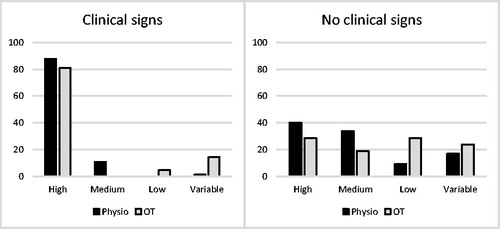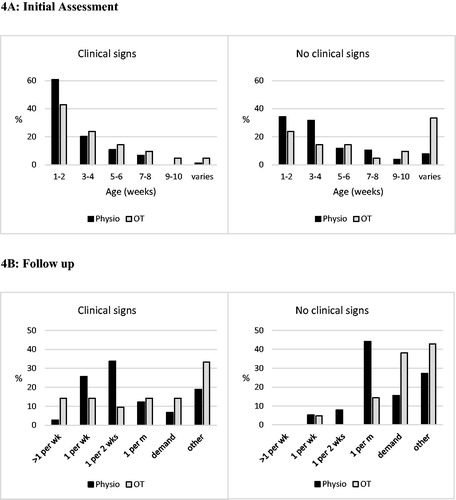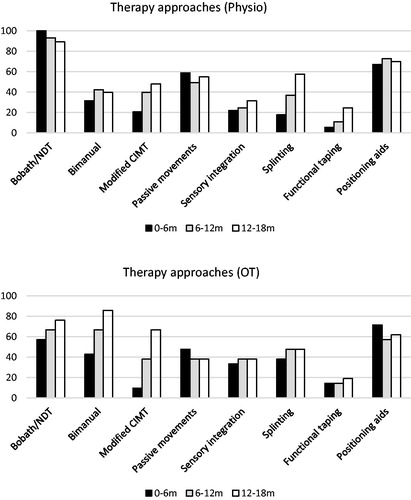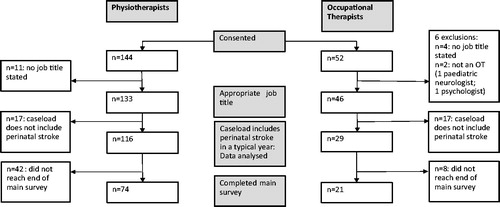Figures & data
Table 1. Summary of Survey Topics
Figure 2. Age at referral to therapy services. Responses to question “At what (corrected) age are infants with perinatal stroke most often referred? Please rank the choices”. TEA: term equivalent age. Vertical axis: indication of frequency, expressed as percentage of total weighted scores. Black bars: responses from physiotherapists; gray bars: responses from occupational therapists.

Figure 3. Prioritization of referrals. Responses to the questions “Would infants with perinatal stroke be classed as High/Medium/Low priority: (A) if there were clinical signs of motor dysfunction at the time of referral and (B) if there were no clinical signs of motor dysfunction at the time of referral”. Horizontal axis: prioritization category. Vertical axis: percentage of respondents.

Figure 4. (A) Left: Responses to the question “Within how many weeks do you typically see an infant with perinatal stroke whom you have been advised has clinical signs of motor dysfunction in order to carry out an initial assessment?” Right: Responses to the same question but for infants in whom no clinical signs of motor dysfunction were identified by the referrer. (B) Left: Responses to the question “How frequently would you expect to follow up an infant who has suffered a perinatal stroke and who currently has clinical signs of motor dysfunction?” Right: Response to the same question for an infant who currently has no clinical signs of motor dysfunction.

Figure 5. Response to the question “What therapy approaches do you use for infants with perinatal stroke at different ages, in order to address upper limb motor dysfunction? Please tick all that apply”. All options provided in the dropdown list are shown. Top: Physiotherapists. Bottom: Occupational therapists.


